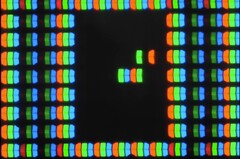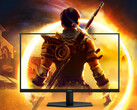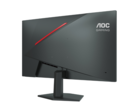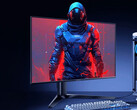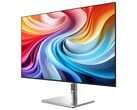A developer has made a version of the classic game Snake fit for a Notebookcheck display benchmark.
Patrick Gillespie, a software developer, has created a version of Snake that uses the individual subpixels of a monitor or display (like the Sceptre 24-inch 1080p LED monitor, curr. $79.97 on Amazon). Gillespie developed the game to run in a web browser. It plays exactly like a standard version of Snake, which lets a player control a digital crawler as it consumes objects and grows longer with each meal.
Most modern displays use pixels to create an image. These pixels are created using three colors: red, green, and blue. Each pixel contains a column of each color, each of which is known as a "sub-pixel." (You can see these subpixels in most laptop reviews here at Notebookcheck, under the Display section.)
The big sticking point for Gillespie's project was getting the game to highlight only one color in each subpixel. While he was able to program the game to highlight individual subpixels, his display caused some color issues. For example, when the green subpixel was supposed to be active, light from the monitor's backlight would bleed through and subtly illuminate the red subpixel next to it.
After recoding the game to use a different color space than the standard sRGB, Gillespie nailed his intended result. The end product is a wholly impractical way to play Snake that requires a microscope. However, it's a fascinating look at how computer code can read and control the individual subpixels of a display.
You can check out Gillespie's full explanation in the video below.
The project is available on GitHub here.
Source(s)
YouTube




